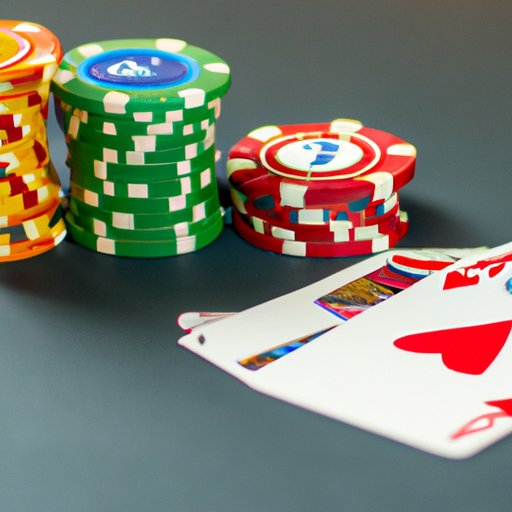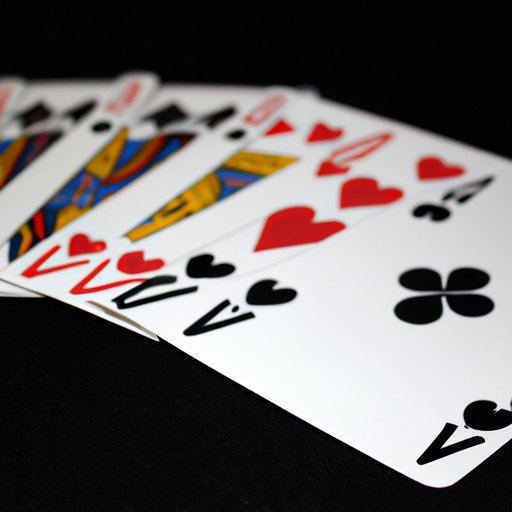Introduction
Poker is a game that combines skill, strategy, and luck. Players must make the best possible hand of five cards using the two cards in their hand and the five cards on the table. The game is played with a standard deck of 52 cards, and its objective is straightforward: to win the pot, which is the sum of money bet by all the players in a hand.
Whether you’re playing casually with friends or competing in a high-stakes tournament, knowing the basic rules and strategies of poker is essential. In this guide, we’ll cover everything you need to know to get started, including the top 10 basic rules of poker, the best strategies for winning, tips from the pros, different types of poker games, and poker etiquette dos and don’ts.
10 Basic Rules of Poker Every Beginner Should Know
Before you start playing, you need to understand the fundamental rules of the game. Here are the top 10 rules of poker that every beginner should know:
- Hand Rankings: The ranking of hands in poker is determined by the strength of the cards. The highest-ranking hand is a Royal Flush, and the weakest hand is a high card. The full ranking of hands, from highest to lowest, is Royal Flush, Straight Flush, Four of a Kind, Full House, Flush, Straight, Three of a Kind, Two Pair, One Pair, and High Card.
- Betting and Raising: The player to the left of the dealer starts the betting, and play continues clockwise around the table. Players have the option to bet, raise, or fold. In a no-limit game, players can bet or raise any amount at any time.
- The Objective: The object of the game is to win the pot by having the highest-ranking hand at the end of the round or by getting other players to fold.
- Blinds: Two players to the left of the dealer are required to post the small blind and big blind bets. These bets are mandatory before the cards are dealt and ensure that there is money in the pot to be won.
- Check: If no bets have been placed, a player can choose to check, which means they do not bet any money and pass the turn to the next player.
- Flop: After the initial round of betting, three community cards are dealt face-up on the table. This is called the flop.
- Turn: After another round of betting, a fourth community card is dealt face-up on the table. This is called the turn.
- River: After another round of betting, a fifth and final community card is dealt face-up on the table. This is called the river.
- Showdown: If there are still players in the game after the final round of betting, the players reveal their cards and the player with the highest-ranking hand wins the pot.
- Side Pots: When a player goes all-in and there is still money to be bet, a side pot is created for the other players still in the game. The all-in player is only eligible to win the main pot.

Top 5 Strategies for Winning at Poker
Now that you have a good understanding of the basic rules, it’s time to focus on the strategies that can help you win at poker. Here are the top 5 strategies for winning at poker:
- Reading Other Players: Being able to read other players is a crucial skill in poker. Observing their behavior, body language, and betting patterns can give you valuable information about the strength of their hand. Look for tells, or unconscious physical cues that may give away their strategy.
- Controlling Emotions: It’s easy to get carried away by emotions when playing poker, especially when you have a poor hand or have just suffered a big loss. However, it’s important to remain calm and focused, and avoid going on tilt, or playing recklessly and impulsively in response to emotions.
- Bankroll Management: Managing your bankroll is critical to success in poker. Set aside a fixed amount of money to play with, and don’t exceed that amount. This will help prevent you from losing more money than you can afford to lose.
- Playing Position: Your position in the game can have a significant impact on your strategy. The later you act in each round, the more information you have about the other players and their hands. Use this to your advantage by playing more aggressively in late position.
- Bluffing and Semi-Bluffing: While it’s essential to make the best possible hand, bluffing can also be a powerful tool in poker. A bluff is a bet made with a weak hand to deceive other players into thinking you have a stronger hand. Semi-bluffing is similar, but you have some chance of making a winning hand if you don’t get what you want on the next card.
Poker for Dummies: A Basic Guide
For those new to poker, the game can seem complex and intimidating. But don’t worry: we’ve broken it down into easy-to-understand steps.
Here’s a basic guide to playing poker:
- Each player is dealt two cards face-down. These are called hole cards.
- The first round of betting begins with the player to the left of the big blind.
- The flop, or three community cards, is dealt face-up on the table.
- The second round of betting begins with the player to the left of the dealer.
- The turn, or fourth community card, is dealt face-up on the table.
- The third round of betting begins with the player to the left of the dealer.
- The river, or fifth and final community card, is dealt face-up on the table.
- The fourth and final round of betting begins with the player to the left of the dealer.
- The players still in the game reveal their cards, and the player with the highest-ranking hand wins the pot.
Here are a few examples of hands and game situations:
- A pair: Two cards of the same rank, such as two 8s.
- A flush: Five cards of the same suit, such as five clubs.
- A straight: Five cards of consecutive ranks, such as 10-J-Q-K-A.
- All-in: A player bets all of their remaining chips.
- Split pot: When two or more players have hands of equal value and share the pot.
The Psychology of Poker: How to Read Your Opponents
Being able to read your opponents is a valuable skill in poker. Here’s what you need to know:
Importance of Reading Opponents: To become a skilled poker player, you need to be able to read your opponents and anticipate their moves based on their behavior and demeanor. By paying attention to their body language, betting patterns, and other tells, you can gain valuable information about their strategy and adjust your own accordingly.
Common Body Language and Other Tells: Here are some common tells that can give away your opponent’s hand:
- Shaking hands: Could indicate a strong hand due to the adrenaline rush of having a good hand.
- Staring at chips: Could indicate a weak hand or indecisiveness on how to proceed.
- Looking away: Could indicate a weak hand or lack of confidence.
- Visible breathing: Could indicate a strong hand or nervousness.
- Quick and forceful betting: Could indicate a strong hand or bluffing.
Strategies for Interpreting These Signs: Keep these tips in mind when trying to read your opponents:
- Look for patterns in their behavior and betting.
- Pay attention to their reactions to different cards on the table.
- Keep your own behavior consistent to prevent your opponents from reading you.
- Be cautious of players who seem to be playing unpredictably.
- Don’t solely rely on tells to make decisions, as they can be misleading.
How to Play Poker Like a Pro: Tips from the Pros
Want to take your game to the next level? Here are some insights from professional poker players:
- Have a winning mindset: Believe that you can win and approach the game with confidence and focus.
- Make strategic decisions: Don’t make decisions impulsively or based on emotion. Think logically and strategically.
- Put in the hours: Just like with any skill, becoming a great poker player takes practice and experience.
- Be aware of the odds: Understanding the odds of different hands and the probabilities of drawing certain cards is critical to making informed decisions.
- Be adaptable: Be prepared to adjust your strategy based on your opponents and the situation.
Poker Variations: How to Play Different Types of Poker
There are many different variations of poker, each with its own unique rules and strategies. Here are brief instructions for some of the most popular types:
- Texas Hold’em: Each player is dealt two hole cards and five community cards are placed face-up on the table. Players must use their hole cards and community cards to make the best possible hand.
- Omaha: Each player is dealt four hole cards, and must use two of these cards and three of the five community cards to make the best hand.
- Seven-Card Stud: Each player is dealt two hole cards and one face-up card. Three more face-up cards and one final hole card are dealt, and players must use all seven cards to make the best hand.
- Razz: In this version of Seven-Card Stud, the lowest hand wins.
- Five-Card Draw: Each player is dealt five cards, and they can choose to draw new cards to improve their hand.
Poker Etiquette: Dos and Don’ts
Finally, it’s important to be aware of proper poker etiquette when playing. Here are some dos and don’ts to keep in mind:
- Do: Respect other players and their space, and be courteous at the table.
- Do: Keep your cards on the table and visible to other players.
- Do: Know the rules and follow them.
- Don’t: Look at someone else’s hand, or touch their cards.
- Don’t: Discuss your hand or strategy while still in the game.
- Don’t: Be a sore loser or an arrogant winner.
Conclusion
Now that you know the basic rules and strategies of poker, it’s time to put your skills to the test. Remember to practice, stay calm, and be adaptable. With some practice and dedication, you’ll be on your way to becoming a skilled and successful poker player.
